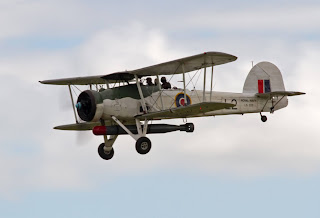Eighty years ago, Nazi Germany and the USSR fail to divide the world between themselves as an unknown British Brigadier wins his first battle
The visit of Soviet Foreign Minister Molotov to Berlin generated huge interest. Since the dismemberment of Poland over a year before relations between the two dictatorships had been uneasily calm. The Soviets were suspicious of a large German presence in Finland which they still hoped to conquer and the Germans were not enthusiastic at the thought of further Soviet expansion in the Balkans. The Germans proposed a deal under which the Soviets would join the Axis and divide their regions into formal spheres of influence; they pointed the Soviets south-east towards the Caucasus and, eventually, British-held India. Ribbentrop, the German foreign minister, argued that this arrangement would reflect the reality of a world in which British power was at an end. As the arrival of British bombers over Berlin – albeit doing minimal damage – forced the negotiating partners into an air-raid shelter, Molotov queried this premise. The discussions concluded with no agreement. Stalin was anxious to avoid confrontation with Hitler, but there was no meaningful advantage available to him from a deal.
As reinforcements arrived from India, the British were able to stage a small counter-offensive against the Italians in East Africa. A brigade of Indian and British troops attacked the fort at Gallabat just over the frontier. In confused fighting a battalion of the Essex Regiment broke and ran. According to some stories – which he did not deny – the brigade commander used his fists on the Essex's colonel. His reputation amongst the troops did not suffer. The British eventually dislodged the Italians and their commander had gained a valuable lesson in the importance of taking resolute action, but he used more conventional discipline measures thereafter. Bill Slim went on to lead the XIV Army to victory over the Japanese in Burma and is recognised as one of Britain’s greatest generals.
The Italian invasion of Greece suffered its first major defeat. The Julia division of good-quality mountain troops advanced too deeply in mountainous territory and found itself surrounded by the Greeks. Attempts to relieve the trapped unit failed and it was practically destroyed. The British newspapers reported with grisly relish that mountain bears and wolves fed themselves on Italian corpses. All territory lost to the initial Italian advance was regained.
Free French troops from Cameroon successfully invaded French Gabon, which was loyal to Vichy. It was a small consolation for de Gaulle’s humiliating failure to take Dakar but it did involve one of the rare instances when the Free and Vichy French fought an all-out battle. De Gaulle played down the number of casualties but dozens were killed.
Neville Chamberlain died of the cancer that had forced him out of government. His funeral service at Westminster Abbey was not publicized out of fear that the Luftwaffe would take the opportunity to bomb and kill senior politicians. The weather was freezingly cold and the only public observed as showing real grief was Sir Horace Wilson, Chamberlain’s all-powerful Civil Service adviser, who wept for his friend and former patron.
The German pocket battleship Admiral Scheer attacked the British convoy HX84 of 38 ships sailing to Liverpool. The convoy’s main escort was the armed merchant cruiser – a liner fitted with seven 6” guns dating from the previous century – H.M.S. Jervis Bay. Her captain Fogarty Fegen did not hesitate to stand and fight the vastly more powerful German warship. She survived 22 minutes but this was enough time for the convoy to scatter and 31 of its ships survived. Fegen was awarded a posthumous VC.
21 Fairey Swordfish torpedo bombers flown off by carrier H.M.S Illustrious attacked the Italian fleet at anchor in the port of Taranto. They achieved complete surprise and three Italian battleships were put out of action. The Royal Navy was left unchallenged in the Mediterranean. The aircraft were of antiquated design but the action was the harbinger of a new form of naval warfare. Gun actions between capital ships were giving place to long-range engagements fought by carrier-borne aircraft. The Imperial Japanese Navy was able to take valuable lessons in exploiting the vulnerability of capital ships at anchor in planning its own attack on Pearl Harbour just over a year later.



Comments
Post a Comment